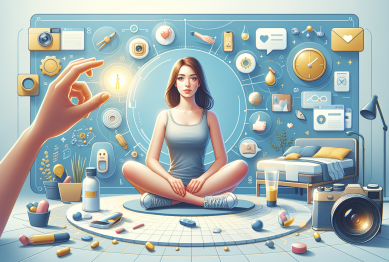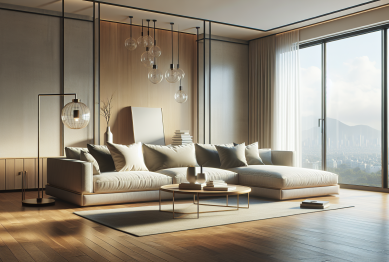It’s Not Just About White Walls and Fewer Shoes – Minimalist
Minimalism has exploded in popularity, but it’s often misunderstood. It’s not about owning the least — it’s about making room for what matters most. Whether you’re drowning in stuff or just tired of being busy all the time, minimalist living offers a refreshing path forward.
And the best part? You don’t need to give away everything overnight. It’s a mindset shift — and it starts with a few small, intentional steps.

What Is Minimalist Living, Really?
Minimalist living is about intentionally choosing less — fewer possessions, fewer commitments, less digital noise — to gain more clarity, time, freedom, and peace.
It’s not deprivation. It’s curation. You remove what distracts you so that what’s left can really shine — whether that’s your relationships, creativity, or health.
What Minimalism Is NOT
Let’s bust a few myths:
- It’s not only for single 20-somethings with no kids
- It’s not about living out of a suitcase or in a tiny home
- It’s not about strict rules
Minimalism is deeply personal. You decide what’s essential. You define your “enough.”
Why Start a Minimalist Lifestyle?
🌱 1. Reduce Stress
Clutter = visual noise. Studies show a messy home can raise cortisol levels (UCLA, 2022).
⏰ 2. Save Time and Money
Fewer things = less cleaning, maintaining, organizing. Plus, you spend more mindfully.
🧠 3. Gain Mental Clarity
When you strip away the non-essential, you free up cognitive and emotional bandwidth for what really matters.
🌎 4. Live More Sustainably
Owning and consuming less reduces your environmental impact — automatically.
How to Start Minimalist Living: 7 Practical Steps
1. Define Your “Why”
Ask yourself:
- What am I making space for?
- What’s causing me stress or distraction? This gives your minimalist journey direction and purpose.
2. Start With One Area
Don’t declutter the whole house in one weekend. Start small:
- A junk drawer
- Your closet
- A single shelf
Progress builds momentum.
3. Use the “One-Year” Rule
Haven’t used it in the past year? Probably don’t need it.
Exception: seasonal or emergency items. Be honest — and a little ruthless.
4. Follow the “One In, One Out” Rule
For every new item that enters your life (a shirt, a gadget), remove one. It’s a simple way to stop clutter from creeping back in.
5. Simplify Your Digital Life
Minimalism isn’t just about stuff.
- Unsubscribe from newsletters
- Delete unused apps
- Organize files and photos
- Take regular social media breaks
Digital clutter = mental clutter.
6. Say No (Without Guilt)
Minimalism applies to your calendar, too.
Ask: “Does this event align with my values and energy?”
If not, skip it. Less busy = more intentional.
7. Celebrate Progress, Not Perfection
Minimalism is a lifelong journey. Some weeks you’ll declutter, some you’ll pause. That’s okay.
Focus on the gains — not the gaps.
Minimalism for Families and Shared Households
Yes, it’s possible — even with kids or roommates.
Tips:
- Lead by example, not pressure
- Create shared “clutter-free zones”
- Focus on function over looks
- Get kids involved in choosing what to donate
Minimalist Living = More Room for What Matters
You don’t need to live in a white-box apartment or own exactly 100 things to call yourself a minimalist. You just need to start being more intentional about what you allow into your life — and what you choose to let go.
So clear one shelf. Turn off one notification. Say no to one commitment that drains you. And notice how a little less brings a whole lot more.
References
- UCLA Center on Everyday Lives of Families (2022). Clutter, Stress, and Wellbeing. Available at: https://www.ucla.edu/research/clutter-stress
- The Minimalists (2023). What Is Minimalism?. Available at: https://www.theminimalists.com/minimalism/
- Becoming Minimalist (2023). How to Start a Minimalist Lifestyle. Available at: https://www.becomingminimalist.com/how-to-start/









